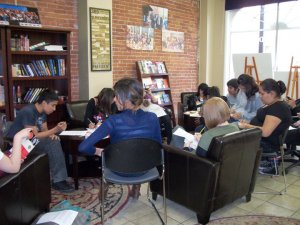I have been reading and responding to so many personal statements, I’ve lost count. Mercifully, many have been through email, so I can always do a search and count them up. Which I have to do so I can track them all for work, but that is future me’s problem…
The thing about personal statements is that they are draining. Well, actually, everything with high school students is draining, but that’s just because everything in high school is the very first ever in the history of life, because 13-18 is the age range where you start to experience others in a more concrete way, but you’re still too young to really pay attention to what you’re learning in class to realize that everyone on the planet has gone through something similar, so it’s not really the first time in the history of humanity; it’s the first time in the history of your life.
And then, just as everything is on the very edge of beginning to come together, you have to write a personal statement (or 5) to get into college and fund your next round of education. And so all of the life experience ends up on the page for other people to read. Continue reading Student writing
















